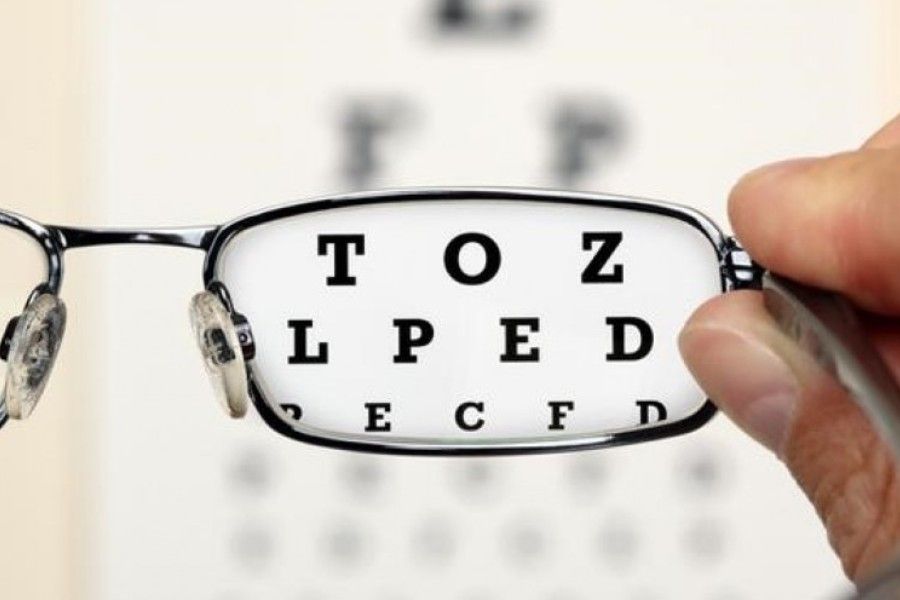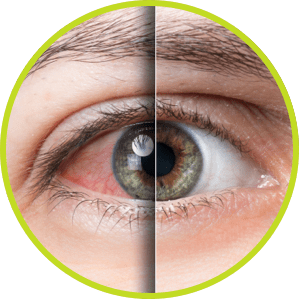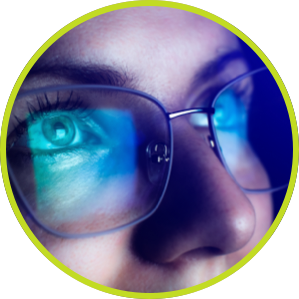Dispelling Fears about Astigmatism
Astigmatism (ah-stig-mah-tiz-uhm) is probably one of the most misunderstood eye conditions. Even the name itself is challenging and is often incorrectly called “stigmatism”.
Some people think astigmatism is more serious than it actually is. Astigmatism is not a disease. Just like farsightedness and nearsightedness, astigmatism is a problem with how the light bends into the eye.
Astigmatism simply means that the light entering the eye does not focus at one single point. It is easily corrected with glasses, contact lenses and even laser surgeries depending on the severity.
Why are some people concerned about astigmatism?
The “fear” of the word astigmatism may have originated in the 1970s when the first soft contact lenses came to the market. At the time, no soft contact lenses were able to correct the astigmatism portion of prescriptions. As such, people who were interested in contacts became very worried at the thought that they might have astigmatism for fear that they could not wear contact lenses.
Today, with the advancements in contact lens technology, astigmatism is no longer much of an issue. It is easily corrected with contact lenses for most prescriptions. However, the misunderstanding about astigmatism still lingers with many people carrying the notion that astigmatism is not only rare but very bad. The truth is, astigmatism is not rare and it is not bad.
Another possible reason for the fear may come from the way astigmatism is sometimes explained to patients. One of the most common ways of describing astigmatism is to say that their eyes are ‘irregularly shaped’. When people hear these words, it may raise concerns that they have some sort of strange disease, when in reality, they do not.
What does astigmatism do?
Just like nearsightedness, astigmatism makes things look blurry. However, unlike nearsightedness, astigmatism makes things look blurry at all distances, not just in the distance. If there is significant astigmatism, it can also sometimes cause things to look double. The blurriness and double vision caused by astigmatism can be corrected with eye glasses or contact lenses.
How common is astigmatism?
This may be a surprising statement, but most people who don’t even need glasses still have some astigmatism that does not affect the clarity of vision very much. In fact, if we include all of the very small amounts of astigmatism, about 90% of the population has astigmatism.
Of course astigmatism can be large or small and the statistic that most people want to know about is: what percentage of the population has enough astigmatism to cause blur? In this case, the answer is between 20 and 30%.
Are there eye problems that create astigmatism?
Yes. There are some rare eye conditions, such as keratoconus, that result in rapidly progressing amounts of astigmatism. In keratoconus, the clear front part of the eye (the cornea) is so thin that the cornea actually changes shape over time, which creates astigmatism. But it is important to remember that the underlying problem is not astigmatism, it is the keratoconus.
Also, if someone’s cornea is injured so badly that it leaves a big enough scar to change the way that light bounces into the eye, this can result in astigmatism. Again, the problem here is not astigmatism, it is the large scar.
Which number in my prescription represents my astigmatism?
Prescriptions have 3 different numbers for each eye. If you wear bifocals or progressive lenses there is actually a fourth number, but for now, let’s just look at the first three. Here is an example of a prescription:
Right eye: -2.50 -0.50 x 180
In this case, the first number tells you if you are nearsighted or farsighted. If the first number is a negative number, you are nearsighted. The second number is the amount of astigmatism. The last number is the orientation of astigmatism. It is possible (and very common) to have astigmatism at the same time as nearsightedness or farsightedness.
If you had a prescription like the one above, you would hardly have any astigmatism at all. Typically if you wear contact lenses and your astigmatism is -1.00 or above, a special “toric” contact lens (a lens that corrects for astigmatism) will be recommended.
Review points
Astigmatism is a problem with how the light bends into the eye, like nearsightedness or farsightedness. Astigmatism is not a disease. Astigmatism is a common condition and can be corrected with glasses and most often with contact lenses or laser eye surgery. Call for an appointment to discuss with us which options might be best for you.
Written by Dr. Clark Hyde, 20/20 Vision Care


































